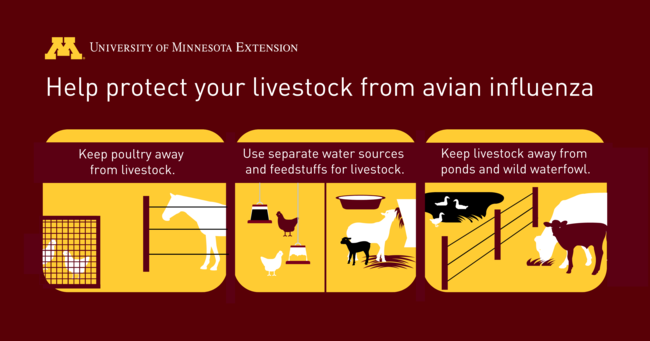Poultry biosecurity
Biosecurity Entry Education Trailer (BEET) — BEET serves to educate and train people on how they can enhance poultry barn biosecurity.
Biosecurity for pigeon lofts — Biosecurity in your loft helps prevent disease in your loft.
Poultry biosecurity risks: identifying flows — Define system boundaries around barns and farmsteads and lines of separation to separate clean from dirty areas. Be aware of every flow that crosses system boundaries and lines of separation.
Poultry biosecurity basics — Learn about common biosecurity breaks, how to avoid biosecurity errors, and get materials and instructions for playing the "Risk and Reward" biosecurity game.
Writing a biosecurity plan using National Poultry Improvement Plan audit principles
- It is a best practice to have, maintain and use a site-specific, operational biosecurity plan, no matter the annual production size.
- A site-specific biosecurity plan allows you to best fit your individual farm needs.
Planning for emergencies
Operations Contingency Plan for Commercial Poultry Producers
Contingency Plan for Commercial Pasture Poultry Production
Contingency Plan for Urban Poultry Keepers
- These forms will automatically download to your device. You will need a current version of Adobe Reader DC to fill out and save the form.
- Download the appropriate PDF to outline essential livestock care if you or your managers experience illness, injury, or another emergency when you may need outside people to provide care.
- Contingency plans cover essential care only. They are not comprehensive care plans.


